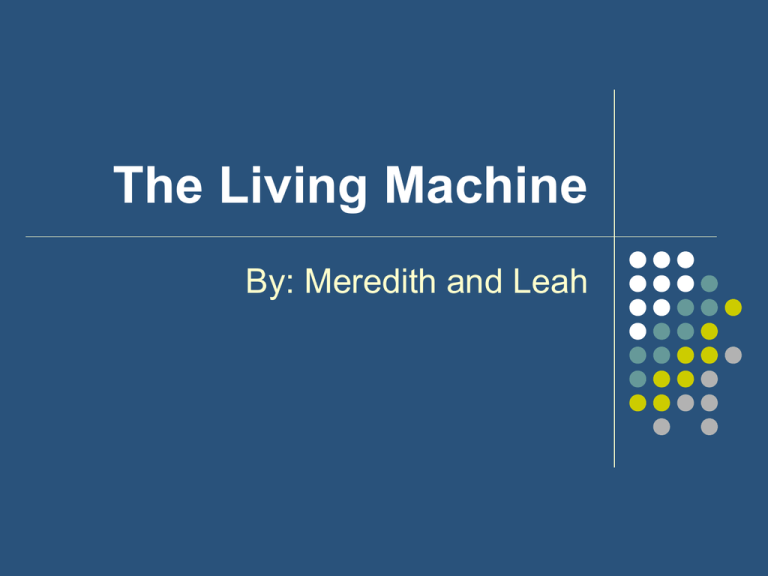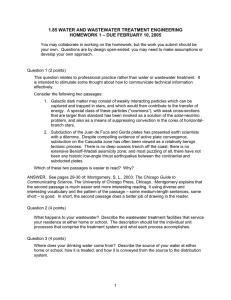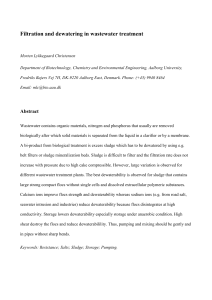The Living Machine
advertisement

The Living Machine By: Meredith and Leah Main Goal The main goal of the living machine is to be a sustainable alternative to conventional waste disposal. It also provides an educational opportunity from its simulation of ecosystems. http://www.dewcorp.com FACTS Everyday two million tons of human waste is disposed of in water courses Less then 1% of the water supply is available for human consumption. In developing nations, 90% of sewage is dumped untreated into usable water supplies. 1.2 billion people do not have access to safe drinking water More then 25,000 people die each day from water related illnesses. Traditional systems Traditional systems: Use environmentally harmful chemicals Create toxic sludge Are energy intensive And often dispose improperly of toxic sludge “Making a Difference” Can provide cost effective onsite treatment systems to prevent waste from polluting rivers and other water sources. Can be installed in places where traditional treatment plants are not able to go Reduces the need to draw on precious water supplies for such things as irrigation and toilet flushing Economic potential in methane gas production and cultivation of plants able to grow in solutions provided by the machine What it does The living machine takes wastewater and purifies it to a point where it can be directly discharged into waterways or can be recycled It does so by utilizing a set of created ecologies Each system is designed specifically depending on the type of wastewater it will treat. http://www.livingmachines.com/ How it works 1. 2. 3. Anaerobic settling tank – this tank allows solids to fall out of the wastewater and sink to the bottom allowing it to become clearer. A Biofilter of bark and other soil-like materials – this is the first filtration and first step to help reduce the odor Photosynthetic algae tank –fix oxygen back into the water and provide organic food (dead algae) for respiration How it works cont’d 4. 5. 6. Higher plants (typically water hyacinth) in aerobic tanks grow in a nutrient solution -provide a stable environment for microbes and remove heavy metals from the water. Microbes are an ideal source of food for plankton which are ideal sources for filter feeding fish This creates the ability for detritus-feeding fish to be added in later tanks so they may consume the larger sections of the treated sludge. Technological obstacles Most living machines require a greenhouse or other structure to protect it from colder weather. Minimal exposure to the environment so it has been unable to become a true ecosystem with natural selection and self-design and management. Political/Economic obstinacies The psychological effect of being able to drink your own wastewater. Traditional wastewater treatments have been embedded into our economy. The living system could have difficulty breaking through the mass scale of traditional systems. Costly to construct Negative environmental impacts If pollution occurs it is due to improper or incomplete design of the Living Machine References http://www.context.org/ICLIB/IC35/Guterson. htm http://www.rps.psu.edu/0009/machine.html http://www.rain-barrel.net/living-machine.html http://www.oceanarks.org/ http://www.toddecological.com/ecomachines. html











